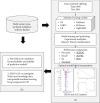Identifying the Most Critical Predictors of Workplace Violence Experienced by Junior Nurses: An Interpretable Machine Learning Perspective
- PMID: 40223873
- PMCID: PMC11981708
- DOI: 10.1155/jonm/5578698
Identifying the Most Critical Predictors of Workplace Violence Experienced by Junior Nurses: An Interpretable Machine Learning Perspective
Abstract
Background: Workplace violence, defined as any disruptive behavior or threat to employees, seriously threatens junior nurses. Compared with senior nurses, junior nurses are more vulnerable to workplace violence due to inexperience, low professional recognition, and limited mental resilience. However, there is an absence of research discussing the workplace violence risk of junior nurses, in particular, the lack of analysis of critical factors within the multiple influences and the lack of targeted risk prediction models. Objective: Considering the multiple influencing factors faced by junior nurses, this study aims to predict the risk of workplace violence using interpretable machine learning models and identify the critical influencing factors and their nonlinear effects. Design: An observational, cross-sectional study design. Participants: A total of 5663 junior registered nurses in 90 tertiary hospitals in Sichuan Province, China. Methods: Data are all obtained through a questionnaire survey. An interpretable machine learning framework, including the Light Gradient Boosting Machine (LightGBM) model and two post hoc interpretable methods, Accumulate Local Effect and SHapely Additive exPlanations (SHAP), are conjoined. Results: The LightGBM model is more accurate than other machine learning methods, achieving an area under the receiver operating characteristic curve of 0.761 and a Brier score of 0.198 on the workplace violence prediction task. Among the dozens of potential influences input into the predictive model, seeing medical complaints, psychological demands, professional identity, etc., are the most critical predictors of workplace violence. Conclusions: The proposed LightGBM-SHAP-ALE approach dynamically and effectively identifies junior nurses at high risk of workplace violence, providing a foundation for timely detection and intervention.
Keywords: critical predictors identifying; interpretable machine learning; junior nurses; risk prediction; workplace violence.
Copyright © 2025 Lanjun Luo et al. Journal of Nursing Management published by John Wiley & Sons Ltd.
Conflict of interest statement
The authors declare no conflicts of interest.
Figures









Similar articles
-
Frequency and risk factors of workplace violence on psychiatric nurses and its impact on their quality of life in China.Psychiatry Res. 2013 Dec 15;210(2):510-4. doi: 10.1016/j.psychres.2013.06.013. Epub 2013 Jul 11. Psychiatry Res. 2013. PMID: 23850435
-
Incidence and risk factors of workplace violence against nurses in a Chinese top-level teaching hospital: A cross-sectional study.Appl Nurs Res. 2018 Apr;40:122-128. doi: 10.1016/j.apnr.2018.01.003. Epub 2018 Jan 31. Appl Nurs Res. 2018. PMID: 29579486
-
The relationship of workplace violence and nurse outcomes: Gender difference study on a propensity score matched sample.J Adv Nurs. 2020 Feb;76(2):600-610. doi: 10.1111/jan.14268. Epub 2019 Nov 28. J Adv Nurs. 2020. PMID: 31736133
-
Workplace Violence Against Iranian Nurses: A Systematic Review and Meta-Analysis.Violence Vict. 2018 Dec;33(6):1148-1175. doi: 10.1891/0886-6708.33.6.1148. Violence Vict. 2018. PMID: 30573555
-
Incidence and related influencing factors of workplace violence among psychiatric nurses in China: A systematic review and Meta-analysis.Arch Psychiatr Nurs. 2022 Oct;40:68-76. doi: 10.1016/j.apnu.2022.04.005. Epub 2022 Apr 26. Arch Psychiatr Nurs. 2022. PMID: 36064248
References
-
- Ilo. Safe and Healthy Working Environments Free From Violence and Harassment . Geneva, Switzerland: international labour organization; 2020.
-
- Bader S. M., Evans S. E. Predictors of Severe and Repeated Aggression in a Maximum-Security Forensic Psychiatric Hospital. International Journal of Forensic Mental Health . 2015;14(2):110–119. doi: 10.1080/14999013.2015.1045633. - DOI
-
- Koklonis K., Sarafidis M., Vastardi M., Koutsouris D. Utilization of Machine Learning in Supporting Occupational Safety and Health Decisions in Hospital Workplace. Engineering, Technology & Applied Science Research . 2021;11(3):7262–7272. doi: 10.48084/etasr.4205. - DOI
Publication types
MeSH terms
LinkOut - more resources
Full Text Sources

